Journeys with Carole Kotkin
Welcome to Bordeaux
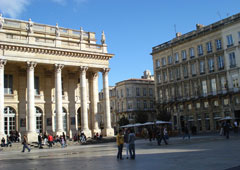

Carole Kotkin is a syndicated Miami Herald food columnist and co-author of “MMMMiami – Tempting Tropical Tastes for Home Cooks Everywhere.” She is also the manager of The Cooking School at The Ocean Reef Club, food editor for “The Wine News” magazine, and co-host of “Food and Wine Talk” on southfloridagourmet.com.

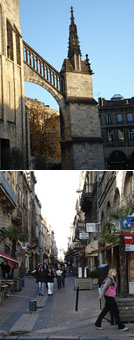
The wines of Bordeaux inspire descriptions like “extraordinary balance” and “gorgeous showstopper,” but many people do not know there is actually a city of Bordeaux. With nearly 15,000 wine chateaus in the region, travelers tend to bypass the city, preferring to spend their time in the nearby wine districts. Bordeaux is one of France’s largest cities and has some of the country’s finest 18th century architecture. And an ultramodern new tram system provides service to most of Bordeaux’s neighborhoods. Shoppers crowd the Rue Ste.-Catherine, a car-free boulevard anchored by the
Galeries Lafayette. All the big names of European couture are there — Kenzo, Sonia Rykiel, Escada, and Ferragamo — and distinctive Bordelaise boutiques can be found on the side streets.
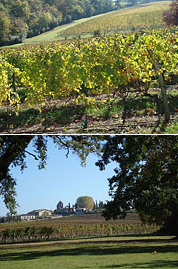
Nestled along the western coast of France, Bordeaux is lush with 2.3 million acres of vineyards. There are about 40 different wine regions, the four major ones are: Pomerol, Graves, Pessac-Leognan, St-Emilion and Medoc. The Medoc region is also broken down into four important inner appellations: St.-Estephe, Paulliac, St.-Julien and Margaux.
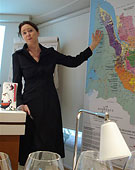
Before beginning an exploration of the region, stop at the Bordeaux Wine School which provides in-depth information, including the history, cultivation, and tastings of Bordeaux wine. You will learn that two great rivers, the Garonne and the Dordogne flow east to west and meet north of the city. They form a large estuary called the Girone that flows northwest to the Atlantic Ocean.
Along the banks of all three rivers lie the wine estates, or chateaux. These chateaux are country houses rather than castles; some small and modest while others are large and ornate. Visitors to this region can stop at a chateau to taste young wines from the barrel and then, to complete the experience, enjoy a mature vintage of the same wine with dinner. The Bordeaux Tourism Office provides daily bus trips (April 1 to Nov. 15) to the key appellations.
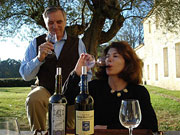
Like Paris, Bordeaux has its right and left banks. The north or “right bank” of the Dordogne River includes the esteemed appellations of Pomerol and St-Emilion, in addition to lesser-known (and less expensive) appellations such as Chateau Beau-Sejour Becot, Lussac-St-Emilion, Fronsac and Lalande-de-Pomerol. Merlot is the main grape of the right bank, although Bordeaux wine’s unique flavor is linked to the careful blending of several grape varieties, which varies according to terroir and chateau. Most right bank wines are blends of Merlot and Cabernet Franc and/or Cabernet Sauvignon. Right bank reds tend to be more luscious and less austere than those of the left bank.
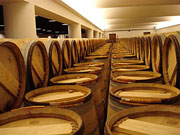
The western bank of the Garonne River, usually referred to as the “left bank,” produces the region’s most profound Cabernet Sauvignon-based wines, such as Chateau Mouton Rothschild, Chateau Latour and Chateau Lafite Rothschild. It includes the famous appellations of Margaux, St-Julien, Pauillac and St-Estephe. The predominant red-wine grapes of the left bank are Cabernet Sauvignon, Merlot, Cabernet Franc, Petit Verdot and Malbec. The Cabernet Sauvignon grape gives Bordeaux reds their rich tannins, depth of flavor and amazing longevity. Merlot, adds softness and roundness, and Cabernet Franc adds subtle aromas. The most distinguished white Bordeaux grapes are Semillon, indispensable to the sweet and luscious Sauternes; and Sauvignon Blanc used to make fruity, dry wines.
Gastronomic Shopping

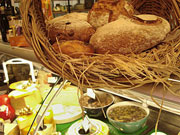
Jean d’Alos Cheese Shop
4, rue Montesquieu, Bordeaux
56-44-29-66
Mr. d’Alos, whom most consider the best affineur, or ripener, of cheeses in France, carries over 150 farm and raw milk cheeses. Ask for a taste.
Where to Stay
Hôtel de Normandie
7, cours 30 Juillet, Bordeaux
(33-5) 56-52-16-80; fax (33-5) 56-51-68-91
www.hotel-de-normandie-bordeaux.com
The location, just off the chic Allées de Tourny, is ideal, and the welcome is warm from the Laguens family, the owners for three generations.
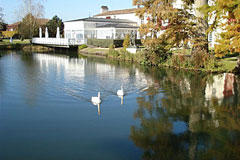
Le Sources de Claudalie
Chemin de Smith-Haut-Lafitte, Martillac 33650
(011) 33-5-57-83-83-83
www.sources-caudalie.com.
This charming hotel and spa is located in the midst of Château Smith-Haut-Lafitte’s vineyards in Pessac-
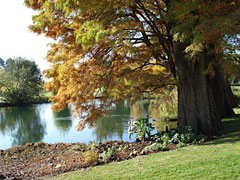
Léognan. It was opened in June 1999 by Daniel and Florence Cathiard on the grounds of their Pessac-Léognan estate, Château Smith-Haut-Lafitte. The hotel has 40 rooms and nine suites, many with private patios or decks. The “spa de vinothérapie” is based on the notion that treatments using products extracted from the polyphenols of grape skins, seeds and indigenous yeasts are healthy for you.
Where to Eat
Like most wine capitals, Bordeaux has always been a good eating town, and its inhabitants are fond of its oysters with little sausages, foie gras, and roasted chicken, duck, and lamb. Bordeaux’s restaurants long ago discovered their customers come primarily for le vin, and their menus are, of course, wine-friendly. There can be few wine and food marriages more satisfying than rosy slices of Pauillac lamb fragrant with garlic served with a fine Médoc.
La Tupina
6, rue Porte de la Monnaie
(33-5) 56-91-56-37; fax (33-5) 56-31-92-11
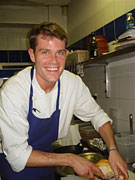
La Tupina is the restaurant most devoted to regional cuisine. If you can have only one meal in Bordeaux, eat it here. Owner Jean-Pierre Xiradakis grills and roasts magnificent chickens and ribs of beef over an open hearth. His foie gras, adorned only with gros sel (large grains of salt), and his potatoes fried in goose fat remind you that you’re in the southwest
of France. Located in one of Bordeaux’s oldest quarters, just off the river, this homey restaurant centers around a fireplace sizzling with slabs of red meat, duck and chicken. Xiradakis supports farmers who supply authentic regional ingredients, while his wine list spotlights talented vignerons in obscure appellations. Servings are generous and customers leave deeply pleased and satisfied.
La Grand’Vigne
Les Sources de Caudalie, Chemin de Smith-Haut-Lafitte, Bordeaux-Martillac 33650
(011) 33-5-57-83-83-83
www.sources-caudalie.com.
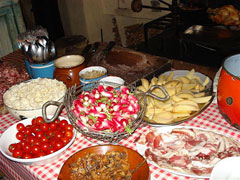
La Grand’Vigne is the crown jewel of Les Sources de Caudalie, The elegant 45-seat restaurant, a Michelin one-star, is both sober and opulent. Bay windows open to a patio and a pond where swans glide against a pastoral backdrop of gently sloping vineyards hemmed by woods. Chef Franck Salein, is from the Languedoc. His cuisine is delicate and flavorful; the dishes emphasize the quality of the ingredients, allowing their pure flavors to shine. The impeccable service is friendly and attentive. The excellent wine list offers 600 selections backed by a 15,000-bottle inventory — two-thirds from Bordeaux (with impressive verticals of the first-growths), one-third from Burgundy, Spain and other regions. Chief sommelier Stephen Towler, knows his wines intimately and will match a different wine with each dish.
<% ' 'Don’t miss Carole’s photo gallery!
' %>


